外研版(2019)必修 第一册Unit 6 At one with nature Using language(2)—Listening课件 (16张)
文档属性
| 名称 | 外研版(2019)必修 第一册Unit 6 At one with nature Using language(2)—Listening课件 (16张) | 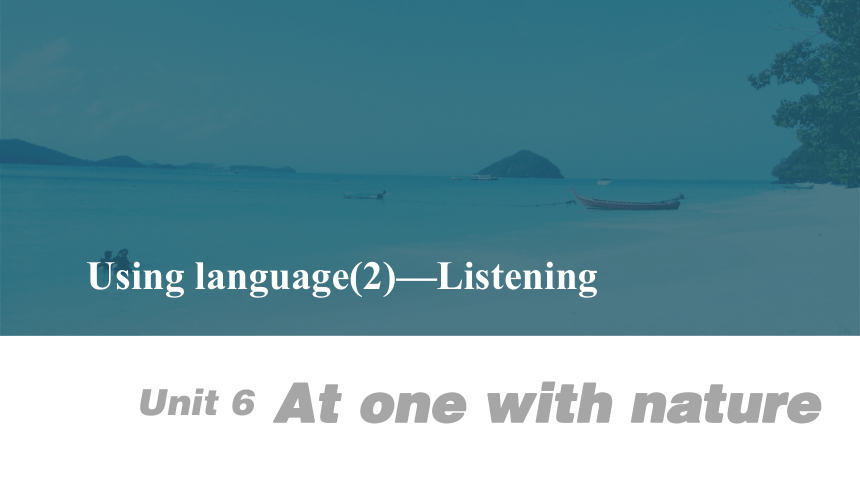 | |
| 格式 | pptx | ||
| 文件大小 | 47.7MB | ||
| 资源类型 | 教案 | ||
| 版本资源 | 外研版(2019) | ||
| 科目 | 英语 | ||
| 更新时间 | 2023-10-09 21:32:34 | ||
图片预览

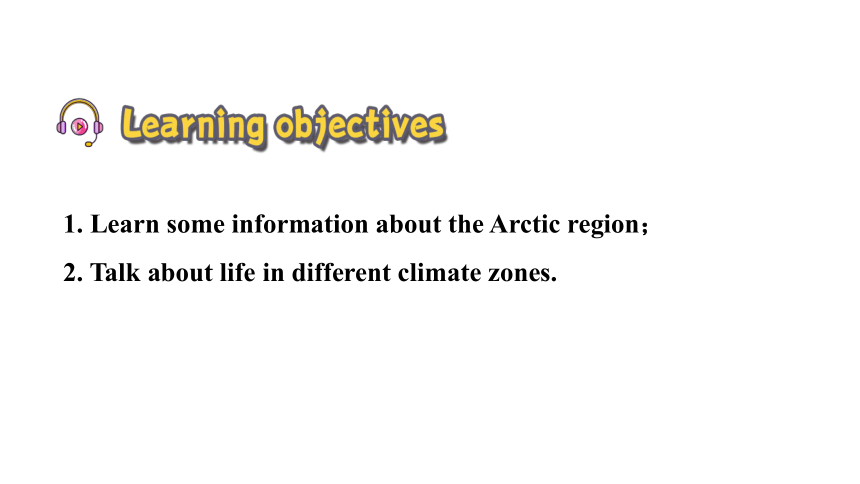
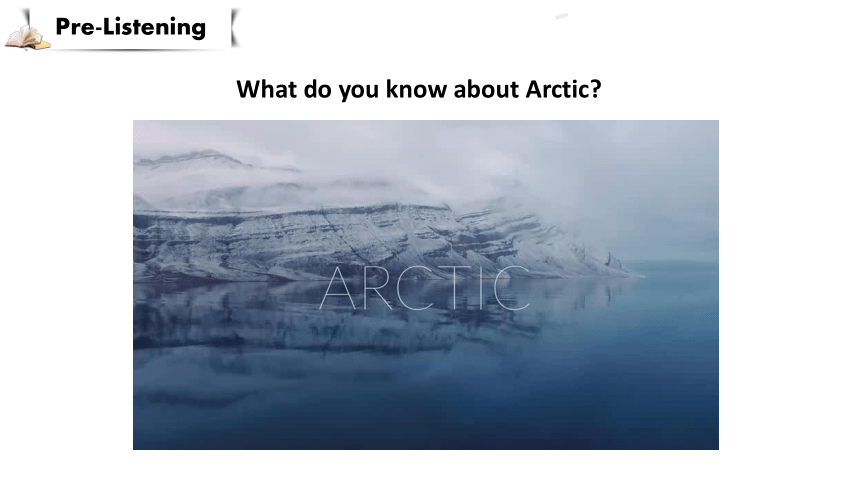
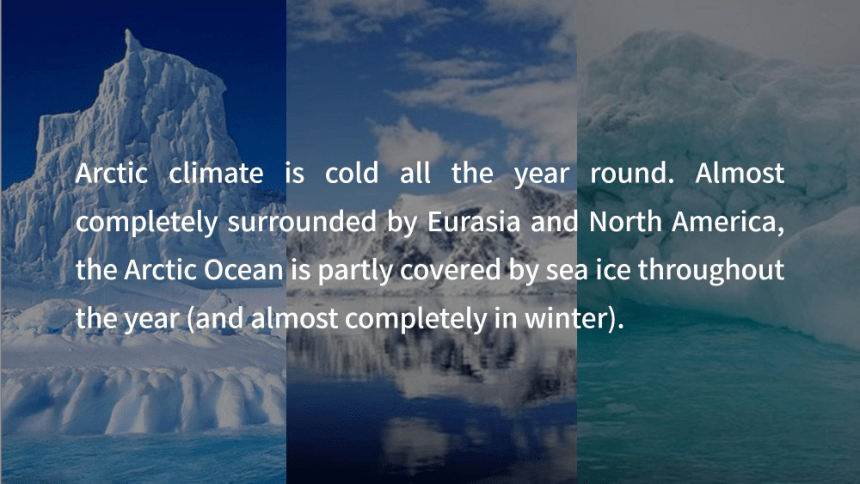
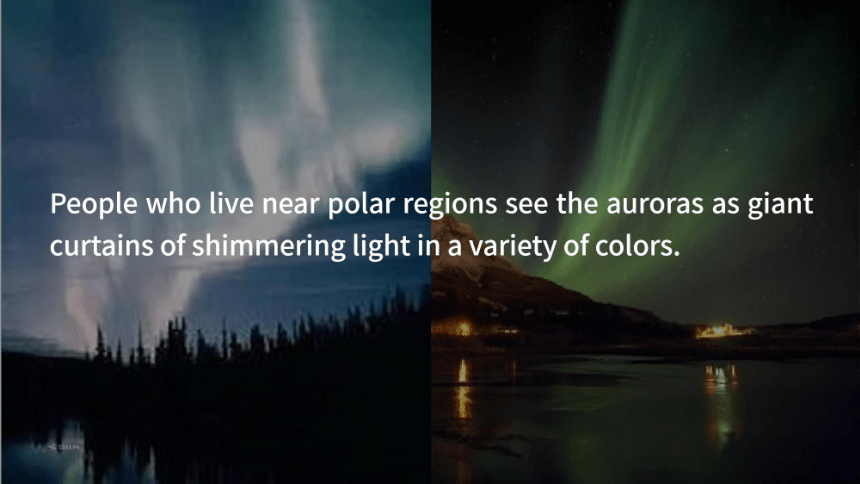
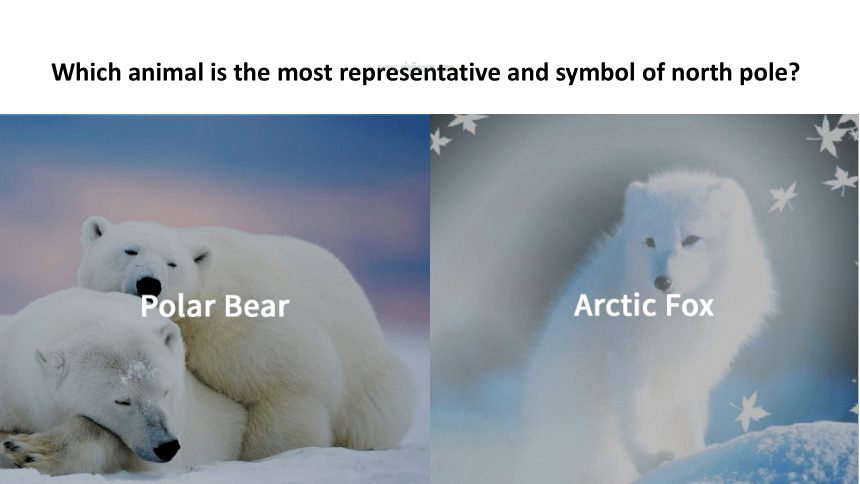

文档简介
(共16张PPT)
Using language(2)—Listening
At one with nature
Unit 6
1. Learn some information about the Arctic region;
2. Talk about life in different climate zones.
Pre-Listening
What do you know about Arctic
Which animal is the most representative and symbol of north pole
Around four million people live in the Arctic region, of whom around 170, 000 are _____. The place where they are living is called _____.
Inuit
igloo
The Arctic includes parts of eight countries:
Canada, Russia, the United States, Denmark, Norway, Iceland, Sweden and Finland.
Task 1: Listen to a girl talking about Inuit life and identify the things that are mentioned.
A dog sled
Igloo
√
√
√
While-Listening
Inuit life Advantages Disadvantages
Housing Igloos are quite warm inside and it’s easy to find the ________________. Igloos can only _______ for around 50 days.
Food Eating a lot of fish and meat keeps our bodies strong so that we can ____________. The ____________ makes it difficult for us to grow enough vegetables and fruit.
Polar night It gives us more _______ to be with our family and friends. Life can be __________ sometimes.
Tourism It brings more money and _______________. Our environment is being ___________.
cold weather
building materials
be kept
fight the cold
time
boring
job opportunities
polluted
Task 2: Listen again and complete the table.
When you hear a word that you don’t recognise, don’t panic! Try to note down how it sounds, and keep listening. When you have finished listening, try to work out the meaning from the context of the word.
Learning to learn
Marly:My name’s Marly. I’m from an Inuit village in the far north of Canada. Our lives are closely connected to the natural world of the Arctic.
Although we live in regular houses,we stay in temporary shelters called “igloos” when we go hunting. Igloos are made of snow or ice. On the one hand, they are quite warm inside and the building materials can be found everywhere. But on the other, they can only be kept for around 50 days.
We get our food from the nearby sea. Eating a lot of fish and meat keeps our bodies strong so that we can fight the cold. But the downside is that the cold weather makes it difficult for us to grow enough vegetables and fruit.
Transcript
It’s completely dark here for three months of the year,which is a period called “polar night”(极夜). So, life can sometimes be boring! But the good thing is, during that time the elders tell us stories about our people. It gives us more time to be with our family and friends.
Nowadays, ships bring tourists to the Arctic. The advantage to this is that it brings more money and job opportunities, but the disadvantage is that our environment is being polluted.
One thing is for sure, though:no matter how things change, our traditions will remain an important part of our lives.
Work in pairs. Talk about life in the tropics and the Arctic.
Post-Listening
Student A
You live in the tropics. Talk about your life with Student B from the Arctic.
Advantages of living in the tropics:
It’s usually warm all year round.
It’s easy to grow food.
The jungles are full of beautiful plants and animals.
Disadvantages of living in the tropics:
It can get too hot to go outside.
There are tropical storms.
Food can go bad quickly.
Student B
You live in the Arctic. Talk about your life with Student A from the tropics.
Advantages of living in the Arctic:
The Northern Lights are amazing.
Food can be preserved for a long time.
It’s not too crowded.
Disadvantages of living in the Arctic:
It gets very cold and is dark during much of the year.
Fruit and vegetables don’t grow naturally.
Life can sometimes be boring and dull.
Using language(2)—Listening
At one with nature
Unit 6
1. Learn some information about the Arctic region;
2. Talk about life in different climate zones.
Pre-Listening
What do you know about Arctic
Which animal is the most representative and symbol of north pole
Around four million people live in the Arctic region, of whom around 170, 000 are _____. The place where they are living is called _____.
Inuit
igloo
The Arctic includes parts of eight countries:
Canada, Russia, the United States, Denmark, Norway, Iceland, Sweden and Finland.
Task 1: Listen to a girl talking about Inuit life and identify the things that are mentioned.
A dog sled
Igloo
√
√
√
While-Listening
Inuit life Advantages Disadvantages
Housing Igloos are quite warm inside and it’s easy to find the ________________. Igloos can only _______ for around 50 days.
Food Eating a lot of fish and meat keeps our bodies strong so that we can ____________. The ____________ makes it difficult for us to grow enough vegetables and fruit.
Polar night It gives us more _______ to be with our family and friends. Life can be __________ sometimes.
Tourism It brings more money and _______________. Our environment is being ___________.
cold weather
building materials
be kept
fight the cold
time
boring
job opportunities
polluted
Task 2: Listen again and complete the table.
When you hear a word that you don’t recognise, don’t panic! Try to note down how it sounds, and keep listening. When you have finished listening, try to work out the meaning from the context of the word.
Learning to learn
Marly:My name’s Marly. I’m from an Inuit village in the far north of Canada. Our lives are closely connected to the natural world of the Arctic.
Although we live in regular houses,we stay in temporary shelters called “igloos” when we go hunting. Igloos are made of snow or ice. On the one hand, they are quite warm inside and the building materials can be found everywhere. But on the other, they can only be kept for around 50 days.
We get our food from the nearby sea. Eating a lot of fish and meat keeps our bodies strong so that we can fight the cold. But the downside is that the cold weather makes it difficult for us to grow enough vegetables and fruit.
Transcript
It’s completely dark here for three months of the year,which is a period called “polar night”(极夜). So, life can sometimes be boring! But the good thing is, during that time the elders tell us stories about our people. It gives us more time to be with our family and friends.
Nowadays, ships bring tourists to the Arctic. The advantage to this is that it brings more money and job opportunities, but the disadvantage is that our environment is being polluted.
One thing is for sure, though:no matter how things change, our traditions will remain an important part of our lives.
Work in pairs. Talk about life in the tropics and the Arctic.
Post-Listening
Student A
You live in the tropics. Talk about your life with Student B from the Arctic.
Advantages of living in the tropics:
It’s usually warm all year round.
It’s easy to grow food.
The jungles are full of beautiful plants and animals.
Disadvantages of living in the tropics:
It can get too hot to go outside.
There are tropical storms.
Food can go bad quickly.
Student B
You live in the Arctic. Talk about your life with Student A from the tropics.
Advantages of living in the Arctic:
The Northern Lights are amazing.
Food can be preserved for a long time.
It’s not too crowded.
Disadvantages of living in the Arctic:
It gets very cold and is dark during much of the year.
Fruit and vegetables don’t grow naturally.
Life can sometimes be boring and dull.
